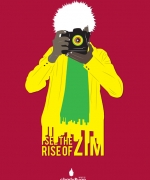Music and Piracy in Zimbabwe
Nowadays any musician in Zimbabwe can launch or release their music. Really? The question is what happens after the release? The hard reality is far from the truth. At best musicians will only be able to use their newly released CD as a marketing tool for live shows. The bottom line is ‘for an artist in Zimbabwe, a CD is as good as a business-card’ – a press kit. In reality, Zimbabwean musicians are slowly accepting the fact that they can only make a living from live gigs and other promotional activities. Music CD sales are thin and far between. When the numbers are added up, one can be empathetic with the audience. Here’s why. A local CD costs upwards of US$10, entrance to any show in Zimbabwe will set one back about US$5 and US$2 for local beer. Patrons are therefore left with little else to spare.
Granted, artists that have made a comfy lifestyle in post-2008 Zimbabwe have clearly not done so on the strength of their music sales. For instance, Urban Groover, Stunner made the seemingly ‘good lifestyle’ he enjoys today due to his business relationship with mobile phone manufacturer G-Tide Zimbabwe. Extensive performances on the Harare live circuit and the popularity of his anthem tune Team Hombe have also been a plus for his image and have enhanced his earning potential as an artist with a big ‘people appeal’.
In general, Zimbabwean musicians have never sold anything near the million mark. Leonard Dembo’s album carrying the hit track Chitekete, was the highest grossing album in Zimbabwe during the early 90s and sold 100 000 copies. A first in the history of music sales in the country until Leonard Zhakata’s Maruva Enyika, broke the Chitekete sales record. Zhakata went on to release 3 other monster hit albums which grossed nothing near Maruva Enyika which ruled the roost for years. Other top selling artists like Simon Chimbetu, John Chibadura, Ngwenya Brothers, Oliver Mtukudzi, Thomas Makion, Nicolas Zacharia, Ngosimbi Crew, Gakamoto Jumbo Stars, Thomas Mapfumo and System Tazvida contended with sales in the regions of 5000 to 10 000 copies on average. Many of them managed to earn a living from these meager sales. Simon Chimbetu’s album with the track ‘Pane Asipo’ released after his release from prison (a hasty counter to the much disputed release of another of his albums titled Zuva Raenda by RTP whom he wanted to dump) remains the only other album with promising sales– albeit not as many as Maruva Enyika.
In 2000, Alick Macheso came into the picture with his second album Magariro after his much hyped about split with Nicholas Zacharia’s Khiama Boys. The album did marginally well on the market, until his release of Simbaradzo which sold well over 300 000 copies. Maruva Enyika’s reign promptly ended with this bestselling nugget. Simbaradzo’s release was the last time Zimbabwean musicians were to realize any meaningful income from their album sales as the Zimbabwean economy soon nosedived. When, most Zimbabweans lost their jobs, buying music ceased to be a priority altogether. As the economy slowly recovered later in the millennium decade, the internet became a source of easy access for music for the struggling Zimbabwean masses.
In the wake of increased piracy in the Zimbabwean music industry, musicians and their association have innovated somewhat. Recently some grouping of record companies clinched a deal with the national mail carrier, Zimpost. The deal enables record companies to sell their music through Zimpost outlets nationwide at a commission. The agreed price for the CDs sold through Zimpost is US$5. However, the profit sharing format between the record companies and Zimpost is not entirely clear. I still feel that music should be more readily available, even at street corners and flea markets. The second half is that they have to make it affordable. You may think they have – but at who’s cost? Someone has positioned themselves to eat the biggest slice of the cake. I say so because the quality being churned out there at US$5 apiece for that rural folk who need a CD of their favourite band are all getting a raw deal, musicians included.
The bottom line is that record companies and independent artists must put in place avenues to affordably package their products so that the masses benefit from the trickle effects. Good quality, accessibility and affordability will ensure that the masses are lured back into buying original music. Imagine two CD’s that will last two weeks for a dollar, how about one genuine CD that will last a life time at US$5? Pimping up the sleeve with fancy and creative artwork, a booklet with info that includes lyrics and interpretations will make the album something to relish. People love the simple things in life. Even if it is sung in a language which they understand they still appreciate the lyrics and hold the booklet up singing along to the lyrics. It gives the CD a life time sentimental value.
All the more reason it should cost US$5 instead of US$1 for two. If ‘Pirates’ cannot afford to ‘pimp up’ the CD, they cannot sell it for above US$1. That imagery and product value separates the men from the boys, the genuine from the fake. Others may argue that record companies and independent artists should produce something simple, without fancy packaging and sell for the same US$1. The danger in doing so is that the original resembles the fake too closely and my regret is that once again, the poor ordinary man and woman on the street have once again been taken for granted. I will argue that with attention to easy access and affordability coupled with quality products, piracy can be beaten.




